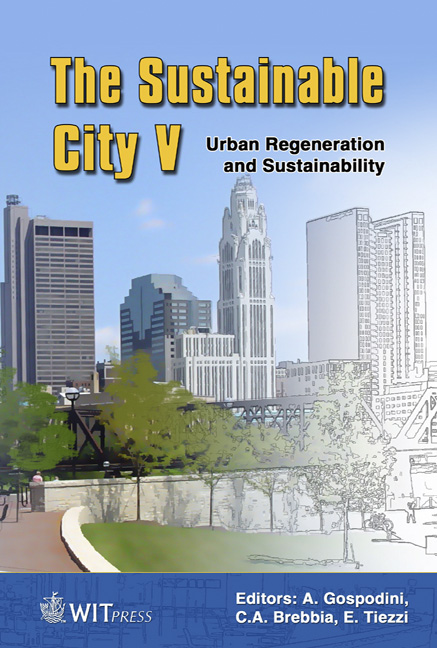The City Surface As A Heavy Metal Emission Source
Price
Free (open access)
Transaction
Volume
117
Pages
9
Page Range
141 - 149
Published
2008
Size
828 kb
Paper DOI
10.2495/SC080141
Copyright
WIT Press
Author(s)
B. Müller, G. Schöller & P. H. Brunner
Abstract
Urban surfaces, such as roofs and walls of buildings, surfaces of transport systems (roads, rails, vehicles etc.), and of networks are steadily degraded by processes like corrosion and wear, resulting in emissions to the environment. Although material flows of surfaces are small compared to total mass flows of cities, they might be of environmental importance. Methods are developed (1). to determine the amount of urban surface materials exposed to the atmosphere, and (2). to assess material flows resulting from the deterioration and wear of urban surfaces to the environment. A case study is presented, focusing on the understanding of the interaction of urban surfaces as a whole and not on the behavior of individual surfaces. The significance of urban surfaces as sources of metals in the environment is discussed. Keywords: surface, city, diffuse emission, heavy metal, copper, zinc, material flow analysis. 1 Introduction Cities have a metabolism comparable to living organisms: they need energy, nutrients, water and have a surface that protects them from weathering and deterioration. They release waste products such as off-gas (e.g. CO2), waste water, solid wastes and emissions. For a proper and sustainable functioning, the urban metabolism must be known, evaluated, and constantly adapted to rapidly changing conditions. On the supply side, the flow of materials is mainly controlled by market forces and adapts quickly to changes in demand due to population growth and purchasing power. In contrast, on the back end, there are less market forces.
Keywords
surface, city, diffuse emission, heavy metal, copper, zinc, material flow analysis.





